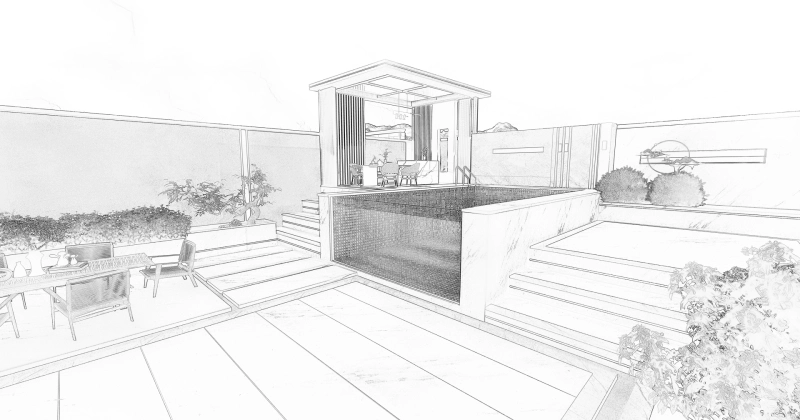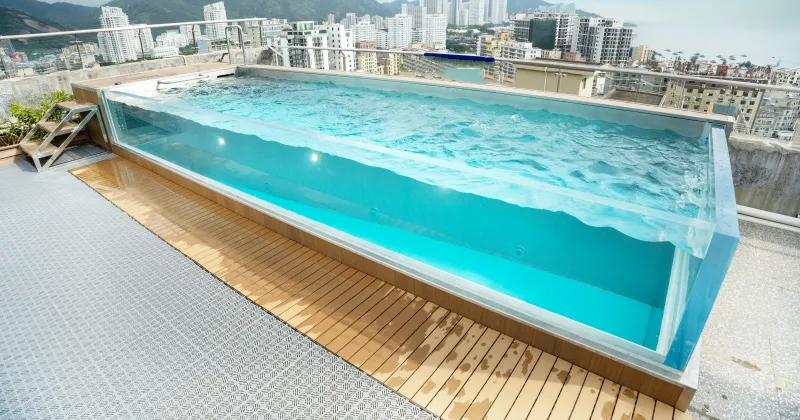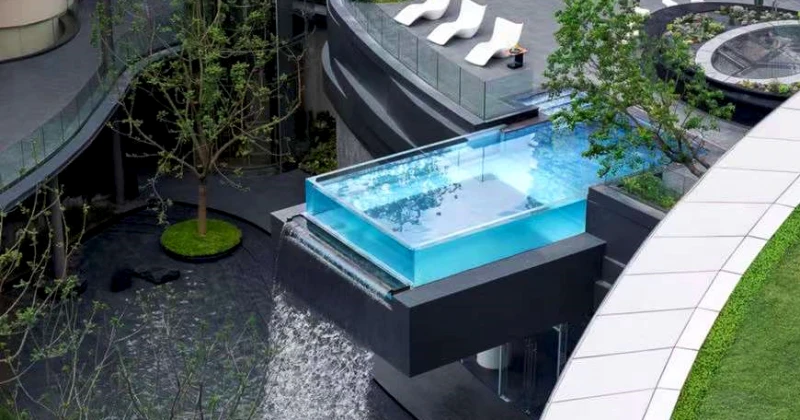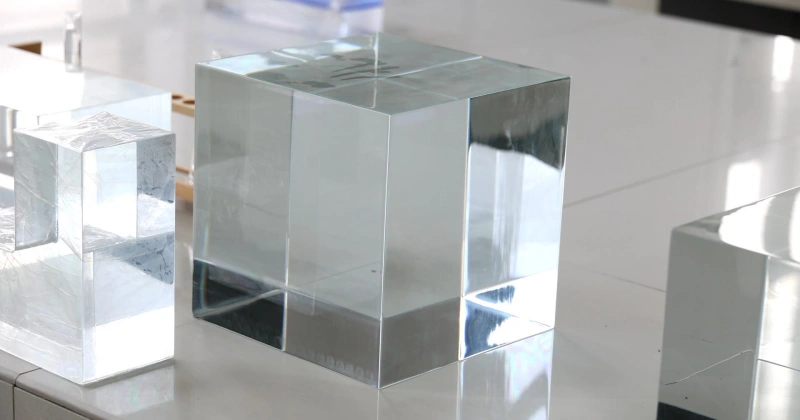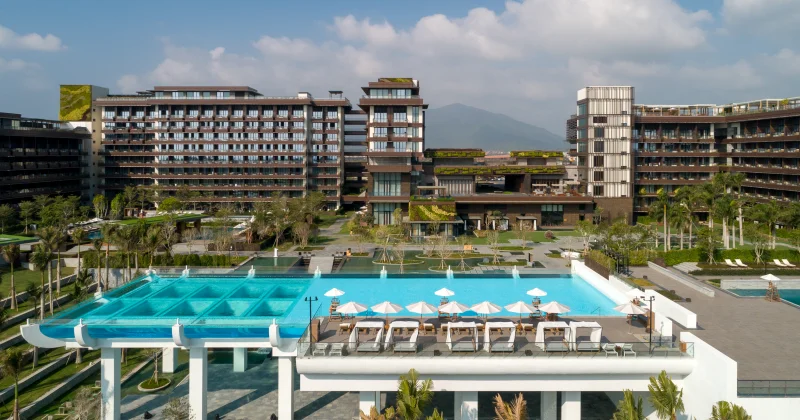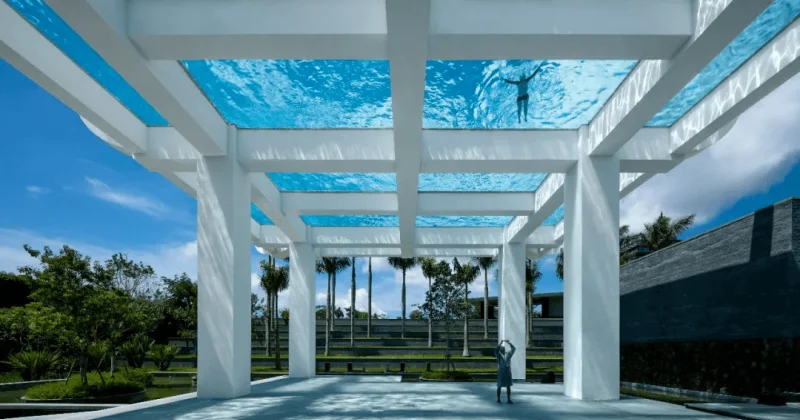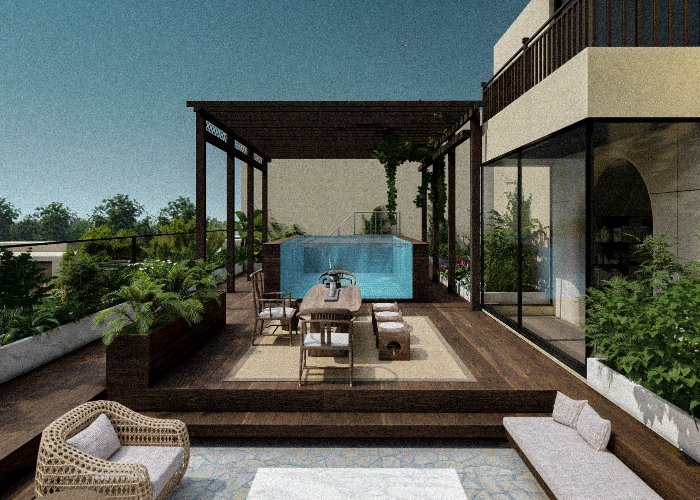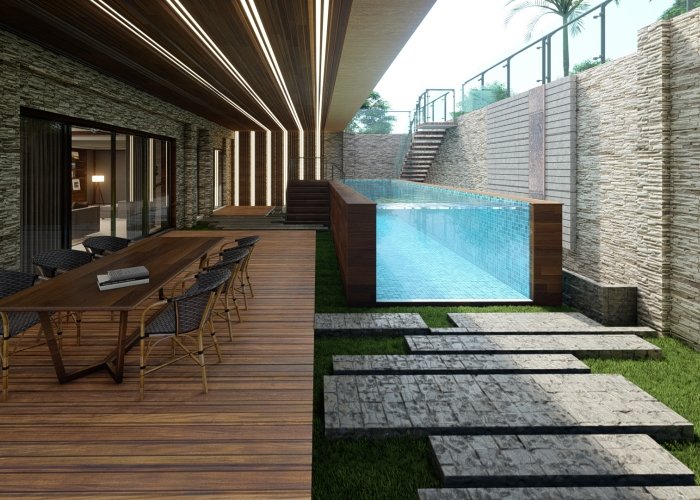
Comparing Acrylic and Glass Pools: Which is Right for You?
Guess what? It’s time for you to install a new pool! But the real question is whether you want to choose an acrylic or a glass pool. After all, both have their advantages and preferences, and the choice can be difficult.
Luckily, though, once you take the chance to understand these differences, you can narrow down your decision-making process based on factors like glass or acrylic pool cost and ongoing maintenance requirements.
Take acrylic pools, for example – they are quite well-known for their durability and versatility and offer a finish that can be customized with various acrylic pool paint colors.
On the other hand, glass pools are much more uniquely aesthetic with their transparent or semi-transparent source material, which means greater and better visual effects, not to mention integration with surrounding landscapes.
Of course, that’s not all! We’re here to build upon this by comparing acrylic and glass pools through factors like cost, durability, aesthetics, and maintenance. Let us help you make the best choice possible!

Defining Acrylic and Glass: What’s The Difference?
We’ve touched upon the basics of what we will cover in the article, but before we jump into the meat of the comparison, let’s set the base so you can make an informed choice about your pool installation.
First, we have acrylic pools. These are made using acrylic polymers taken from acrylic or methacrylic acid. The polymers were first synthesized in the early 1900s and have since become popular for their clarity and durability.
Making this acrylic pool means following the process of polymerizing acrylic esters. This creates polyacrylate resins that are molded into the shape of the pool.
Then, you can use acrylic pool paint to customize the appearance of these pools, which also offers several colors and finishes for personalization.
This material is also highly resistant to cracking and fading and has a level of construction that reduces the likelihood of leaks.
In contrast, the glass pools can sometimes use glass panels made from molten silica mixed with other materials, such as soda and lime, which are then rapidly cooled to form a solid, transparent structure.
In light of this, glass is characterized by its hardness, brittleness, and transparency, meaning they have amazingly unique aesthetic effects.
This is because glass production involves cooling molten materials quickly to avoid the formation of visible crystals, which means a smooth and clear surface
Simply put, the transparency and ability to integrate beautifully with natural light make glass pools popular for modern pool designs.
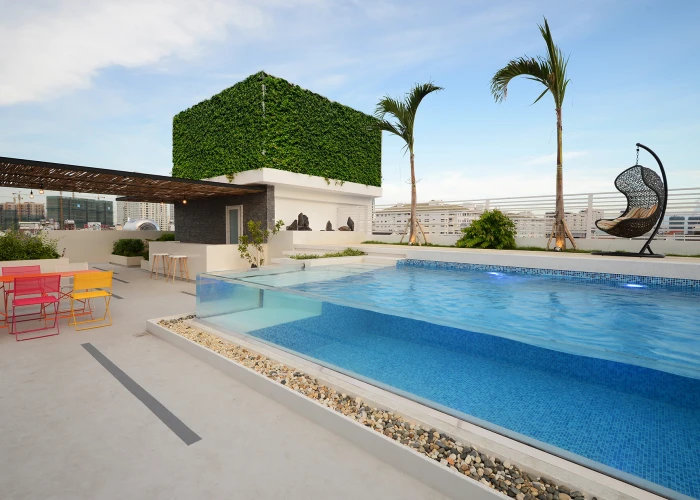
Acrylic Pool vs. Glass Pool: Considerations and Features
Cost
Cost is one of the most significant influencing factors when comparing acrylic and glass pools.
An acrylic pool tends to have a lower initial cost, around $10,000 to $20,000, though it does depend on the size and complexity of the design, as well as the opposing type of glass (because stronger glass, as required for a glass pool, isn’t cheap).
Still, this makes acrylic a more budget-friendly option, especially for people considering a DIY installation. This is easy to understand because of the material's ease of fabrication and installation.
Then we have glass pool costs, which are more expensive than acrylic at between $35,000 and $60,000, though prices can, as mentioned previously, vary based on the quality of the glass and the complexity of the installation.
This higher expense tends to be attributed to the material’s durability and intricate installation process, not to mention the glass panels' heavy and delicate nature. Additional costs could include custom glass cutting and framing, which continue to increase the overall price.

Durability
Then we have durability, where we have to consider that both materials offer impressive longevity levels, albeit in different ways.
For one, acrylic pools resist impact, UV rays, and chemical damage. These pools are designed to withstand harsh weather conditions and heavy usage, which makes them an excellent, long-lasting option for homeowners.
Moreover, this material is an even more appealing option with advanced water treatment technologies that reduce maintenance needs and prolong their lifespan. Not to mention, acrylic’s resistance to cracking and fading means that its visual appeal and functionality remain unchanged over time.
Then there are glass pools, which are also incredibly durable – considering the thickness and strength of the glass used – but with different considerations.
The strength, for example, is notable since it can endure significant pressure and impacts without compromising its integrity (which is a requirement, considering it’s for a pool, where both are aplenty). Therefore, the glass used here is specially tempered.
However, glass pools are prone to scratching like most glass, especially during the construction process and even after installation, all of which can lower the durability or longevity of the structure.
Still, with careful cleaning and regular maintenance, it’s possible to maximize the use capabilities of such a creation.
It’s also important to note that glass pools often involve more complex installation processes and frame support, which helps promise the durability that they infer, and this can also add to maintenance costs over time, something important to note for the previous section.

Aesthetics
At three, we have aesthetics. Within this category, both types of pools boast great popularity.
First, acrylic pools are known for their visual appeal. In contrast, glass pools have reflective surfaces and the illusion of water blending into the environment, making them unique and sophisticated.
The high transparency offers clarity for acrylic pools, enabling people to have unobstructed water views. Not only does the acrylic here provide a sleek, modern look, but it also makes the aesthetic experience of swimming much better with its crystal-clear appearance!
Glass pools also create a visually dramatic effect, which is especially great for the more scenic views. The reflective quality of glass can enhance the overall ambiance of a pool area, which is why it’s often a focal point in luxury properties.
The sleekness and the modern look of it lets the pool complement any architectural style your house boasts. You can also boost the area with other structures, like acrylic pool fencing, pool furniture, etc.

Maintenance
And, of course, when it comes to maintaining acrylic versus glass pools, both have their challenges, just as they have their durability types.
First, acrylic generally needs less maintenance because of its non-porous surface, which resists algae growth and staining. Moreover, this allows for advanced filtration and disinfection systems that help maintain water quality with minimal manual intervention.
Moreover, with greater durability, there are fewer repairs and less frequent need for resurfacing compared to other materials.
Of course, regular checks and servicing of the filtration and disinfection systems still need to be done since this all helps keep the pool working.
On the other hand, glass pools tend to be visually striking, which also means more upkeep and spending. Plus, the glass panels in these pools might be prone to scratching and require special cleaning agents to maintain their clarity.
Similarly to those for acrylic, regular cleaning, and maintenance are necessary to prevent the buildup of algae and other residues.

Safety and Additional Features
Finally, for safety features, it’s impossible not to mention that acrylic pools are designed with safety and efficiency, especially since the chance of cracks or breaks that could pose safety hazards is considerably low.
More importantly, acrylic pools' filtration and disinfection systems have features such as automatic cleaners and intelligent control systems that monitor water quality.
Of course, glass pools don’t fall behind. The tempered glass used is highly durable since it has withstood tremendous pressure and lowered the chance of breakage.
Still, while the transparency might mean that visual inspections are more accessible, any actual structural issues can be more noticeable and potentially alarming, not to mention hard to notice in the first place.
That’s also why glass pool installation often includes advanced safety measures.

Conclusion
Simply put, both acrylic and glass pools have unique benefits catering to different preferences and requirements. Acrylic pools have high durability and customization options, but despite a high initial cost, they’re still incredibly more affordable than glass pools.
Conversely, as mentioned, those very glass pools are expensive but also practical. They’re prized for their modern, transparent aesthetics, which is brilliant for dramatic visual effects!
If you’re choosing between these options, you must know that not only is the initial investment necessary to consider, but also long-term maintenance and aesthetic goals. You have to set your requirements and see which options fit you.
And if you’re looking for all the best characteristics of a pool in one place, visit AUPOOL for an extraordinary experience!






